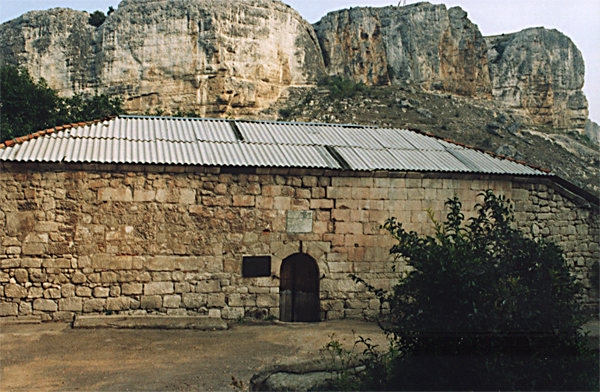Turkish Main Department for Cooperation and Development (TIKA) is ready to hand over the works performed at the Archaeology Museum "Salachiq" to the Bagchasaray raion state administration and Bagchasaray State Historical and Cultural Reserve (BSHCR). QHA is told about it by the director of the Bagchasaray Reserve Yevhen Petrov.
“In mid-October, TIKA will hand over the works performed at the Archaeology Museum "Salachiq" to the Ukrainian side” – Mr. Petrov said.
According to him, the Turkish side presented about USD 1.5 million as a humanitarian aid for archaeological works in Salachiq.
Director of the Reserve also added that the Salachiq Archaeology Museum will be opened for visits in May and June 2010.
"The visitation is not prohibited but basically, the museum can be visited by the interested people, such as historians, archaeologists and other scholars. Recently, our museum was visited by members of the Assosiation of former deputies of the European Parliament" - BSHCR director, Mr Petrov said.
Reference: Salachiq is the historical name of the settlement, which is situated on the outskirts of the modern Bagchasaray city - Starosele - in the western part of the Maryam-dere canyon.
According to the Turkish traveller of the seventeenth century Evliya Chelebi, it was a city “which counted three hundred beautiful houses and five temples”. Such monuments as Dyurbe (mausoleum) of Hadji-Giray (founder of the Crimean Khanate), Zındjırlı-madrasah (Muslim high religious school) are extant. In the recent past, archaeologists have found a large Muslim cemetery – “mezarlıq”, bath – “hammam” and a mosque. The archaeological researches are continued on these objects.

Dyurbe (mausoleum) of the Girays
The mausoleum was built in 1501 over the grave of the founder of the dynasty of the Crimean khans Hadji-Giray by the order of his son Mengli-Giray. In 1515, builder was buried there. Dyurbe is adorned by stone, skilfully ornamented with carved portal.

Zındjırlı-madrasah entrance
Zındjırlı-madrasah, built in 1500, is located next to the mausoleum. Its name comes from the word ‘zındjır’- ‘chain’, because the wrought-iron chain was hung up in the passage door in order no one can enter inside, if he did not bend his head on wisdom. Once, these monuments were in the Palace complex, which was destroyed in the late of ХVIII century.
By QHA
Related Links:
Austria Returns to Ukraine Cultural Values of the Crimean Tatars and Karaims



